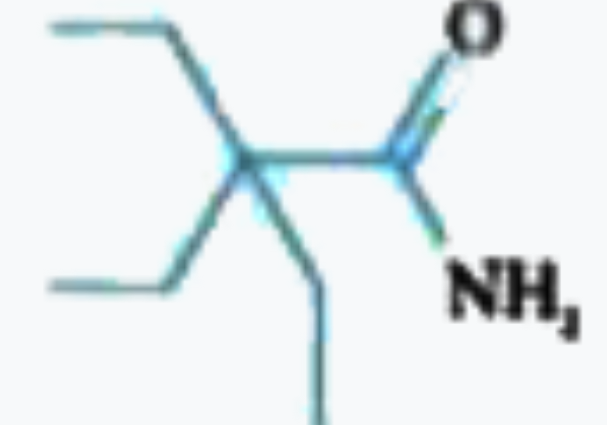Which one of the following is an example of 3∘ amide ?




The correct Answer is:A
To determine which of the given options is an example of a 3° (tertiary) amide, we need to understand the structure of amides and how to classify them based on the number of hydrogen atoms attached to the nitrogen atom.
1. Understand the Structure of Amides:
- An amide has the general structure R-CO-NH2, where R is a hydrocarbon group. The amide functional group consists of a carbonyl group (C=O) attached to a nitrogen atom (N).
2. Identify the Degrees of Amides:
- 1° Amide (Primary): The nitrogen is bonded to one carbon group and has two hydrogen atoms (e.g., R-CO-NH2).
- 2° Amide (Secondary): The nitrogen is bonded to two carbon groups and has one hydrogen atom (e.g., R-CO-NHR').
- 3° Amide (Tertiary): The nitrogen is bonded to three carbon groups and has no hydrogen atoms (e.g., R-CO-NR'R'').
3. Analyze the Given Options:
- Look at each option provided in the question and identify the number of hydrogen atoms attached to the nitrogen atom in each amide structure.
- The correct option will be the one where the nitrogen atom is bonded to three carbon groups and has no hydrogen atoms.
4. Select the Correct Answer:
- After analyzing the options, identify which one corresponds to the structure of a 3° amide, where nitrogen has no hydrogen atoms attached.
Conclusion:
- The correct answer is the option where the nitrogen is bonded to three carbon groups (R-CO-NR'R'') and has no hydrogen atoms.
- An amide has the general structure R-CO-NH2, where R is a hydrocarbon group. The amide functional group consists of a carbonyl group (C=O) attached to a nitrogen atom (N).
- 1° Amide (Primary): The nitrogen is bonded to one carbon group and has two hydrogen atoms (e.g., R-CO-NH2).
- 2° Amide (Secondary): The nitrogen is bonded to two carbon groups and has one hydrogen atom (e.g., R-CO-NHR').
- 3° Amide (Tertiary): The nitrogen is bonded to three carbon groups and has no hydrogen atoms (e.g., R-CO-NR'R'').
- Look at each option provided in the question and identify the number of hydrogen atoms attached to the nitrogen atom in each amide structure.
- The correct option will be the one where the nitrogen atom is bonded to three carbon groups and has no hydrogen atoms.
- After analyzing the options, identify which one corresponds to the structure of a 3° amide, where nitrogen has no hydrogen atoms attached.
- The correct answer is the option where the nitrogen is bonded to three carbon groups (R-CO-NR'R'') and has no hydrogen atoms.
Topper's Solved these Questions
Similar Questions
Knowledge Check
- Question 1 - Select One
Which one of the following is an example of copolymer?
ATeflonBBuna-SCPVCDPolypropylene - Question 2 - Select One
Which one of the following is an example of a clean fuel ?
ACokeBpropaneCPetrolDWax - Question 3 - Select One
Which one of the following is an example of scaffolding?
AGiving prompts and clues and asking questions at critical juncturesBGiving motivational lectures to studentsCOffering explanations without encouraging questioningDOffering both material and non-material rewards
Which one of the following is an example of co-polymer?
View SolutionWhich one of the following is an example of reinforcement ?
View SolutionWhich one of the following is an example of platyhelminthes
View SolutionWhich one of the following is an example of cleistogamy ?
View SolutionWhich one of the following is an example of biodegradable polyester?
View Solution

